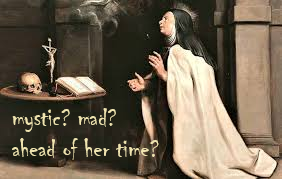Teresa of Ávila lived in 16th-century Spain during a time when the Catholic Church was incredibly suspicious of anyone claiming direct spiritual experiences. The Spanish Inquisition was at its peak, and mystical experiences were often viewed as potentially heretical or even demonic. Women, especially, faced scrutiny if they claimed to have visions or direct communication with God.
Teresa became known as a mystic because of her extraordinary spiritual experiences - ecstatic visions, levitation during prayer, and what she described as mystical marriage with Christ. She wrote detailed accounts of these experiences in works like "The Interior Castle," describing the soul's journey through different stages of prayer and union with God. Her writing was so vivid and psychologically astute that it influenced spiritual practice for centuries.
What made her particularly dangerous in the eyes of authorities was that she was a woman teaching about theology and mysticism - areas typically reserved for male clergy. She also reformed the Carmelite order, establishing stricter convents that emphasized contemplative prayer over the more relaxed monastic life common at the time. This reformist activity drew attention from both church and civil authorities.
Teresa definitely walked a tightrope regarding accusations of witchcraft or heresy. Several of her confessors initially thought her visions might be demonic. She was investigated by the Inquisition multiple times, and her writings were scrutinized for theological errors. The fact that she experienced physical phenomena like levitation made her particularly suspect, as these were often associated with witchcraft.
However, Teresa had several things working in her favor. She was highly educated, came from a noble family, and was incredibly shrewd about church politics. She always submitted her experiences to male confessors for approval and framed her mystical experiences within orthodox Catholic theology. She also had powerful allies, including influential Jesuits and eventually King Philip II himself.
Her influence during her lifetime was enormous. She founded seventeen reformed convents, mentored other mystics like John of the Cross, and her writings provided a roadmap for contemplative spirituality that balanced mystical experience with practical wisdom. She managed to navigate the dangerous waters of her era while fundamentally changing Spanish monasticism.
Here's a website that explores the Seven Mansions of the Inner Castle written by Teresa of Avila. https://myss.com/entering-the-castle/seven-mansions/
